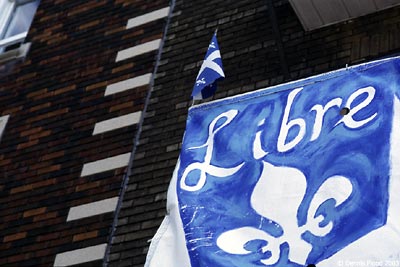COURSE OVERVIEW
History 200 will study the history, culture, and politics of Quebec, first spending almost two weeks in the heart of New France: in Quebec City, the exuberant French capital city just north of New York; on the Saguenay Fjord, one of the world's largest and least known fjords, where we will go whale watching and kayaking in remote eastern Quebec; and on the Ile d'Orleans, a lush island in the St. Lawrence Seaway dotted with wineries, forest trails, and farms.
Next, we will take a train to Montreal, the cosmopolitan financial, business, and educational hub of Quebec. Unlike Quebec City, which seems like a southern European city, Montreal is a cosmopolitan city -- part French, part English, and all bilingual, with a night life to rival Paris, London, and New York, and a student population density perhaps unrivaled anywhere. In Montreal, we explore a city that has been at the crossroads of North America -- established by the French, dominated by the English, and twice invaded by the Americans -- and always finding its own way.
From Montreal, we will travel across just across the border into Ontario, to Ottawa, the Canadian capital, where we will consider the significance of Quebec for Canadian identity, and the on-going tension between the "nation" of Quebec and the "confederation" that is Canada, as well as their mutual relations with their powerful southern neighbor.
The course offers American students a chance to explore the rich and complex history and culture of our neighbors to the north, while enjoying the spectacular outdoors of Quebec, the contentious history of Quebecois nationalism, the exciting culture and nightlife of Montreal, and the unusual arrangements that make Canada an alternative American dream.
Photos: The blue Quebecois nationalist flag and banner. Scroll over to the alternatives: the Canadian maple leaf
flag, and the Montreal flag, which includes the French fleur de lis and the English Cross of St. George, along with the symbols of Scotland and Ireland, the two other major sources of early Quebec immigration.
